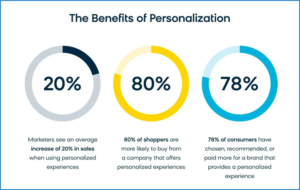Table of Contents
- Why Customer Retention Matters More Than Ever
- The Cost of Churn in a Competitive E-commerce Market
2. Understanding Customer Churn in E-commerce
- What is Customer Churn?
- Key Causes of Customer Drop-offs
- The Financial Impact of Losing Customers
3. How AI-Powered Customer Analytics Reduces Churn
- Predictive Analytics to Identify At-Risk Customers
- Real-Time Personalized Offers to Retain Users
- Real-Time Personalized Offers to Retain Users
4. Key AI Strategies for Churn Reduction in E-commerce
4.1 Behavior-Based Segmentation
- Using Purchase History and Interaction Data
- Targeted Strategies for High-Value Customers
- Real-Time Price Adjustments Based on Behavior and Market Trends
- Customized Offers for Price-Sensitive Shoppers
If you don’t want to read the full blog, you can listen to it here.
In today’s fast-moving e-commerce business, keeping customers is more crucial than ever. As it costs more to get new customers with growing competition, making it far more profitable to keep existing loyal customers than to always chase new ones.
But how can businesses identify and stop customers from leaving before it happens?
By using AI-powered customer analytics, online shops can spot early signs of customers leaving, personalize experiences, and build customer loyalty that lasts.
In this blog, we are diving into the actual definition of customer churn and the causes behind it. Additionally, we will explore how AI-powered customer analytics helps reduce the churn rate.
Understanding Customer Churn in E-commerce
Customer churn in e-commerce refers to the rate at which customers stop purchasing a product or reduce a company’s service over a period. The churn metric is an important aspect of e-commerce because it reduces revenue, increases customer acquisition costs, and creates a negative impact overall. According to a study, customer retention should be a business priority, as a 5% increase in retention can increase profits by 25% to 95%.

Source – Pulse techonology
One of the main reasons why customers leave your e-commerce website is the unexpected costs. It can include additional fees, taxes, or expensive shipping that appears at the very end of the checkout process.
Some of the other common reasons for drop-offs include clear product descriptions. For example, adding clear product descriptions and a search bot makes it faster to decide if the item is right for the buyer. Furthermore, a simple design and fast checkout may contribute to purchasing a product.
How AI-Powered Customer Analytics Reduces Churn
AI-powered customer analytics track and understand customer behavior, thus identifying if a customer is likely to stay or leave. This helps businesses to offer personalized recommendations that suit the needs of one who is likely to leave and improve the overall experience. This leads to increased customer loyalty and retention. Some of the ways in which customer abandonment can easily be identified with artificial intelligence include:
Predictive analytics: past purchases, browsing on the web, and performing customer service tasks are leveraged by AI prediction tools to determine which customers may stop buying. Very likely to find common signals, and that will be an early alert for the possible departure of customers, giving an organization a chance to alpha score quickly and prevent customer attrition. AI also helps in managing customer segmentation, which in turn enables a business to keep all its most important customers as well as prevent their loss of at-risk customers.
Personalized offers: With the AI assistance, businesses can provide efficient and effective personalized recommendations that would suit the customers. By determining the activities of a customer based in real-time, AI can respond to the current actions in the shortest time possible. For example, when a customer is distressed, AI would immediately present an offer for some discounts to keep them satisfied.

Source: Bloomreach
Improving customer experience: AI reviews customer feedback and detects vulnerabilities within the business. These can be eliminated by making improved service, adding to happier customers, and reducing customer churn. Also, AI models capture potential downfalls before they explode, thus giving businesses a warning to deal with obstacles more quickly.
Key AI Strategies for Churn Reduction in e-commerce
E-commerce companies work hard to keep their customers, making customer loyalty a key objective. AI provides some critical strategies to maintain loyal customers stay, and they are,
Behavior-based segmentation
Predictive analytics plays a crucial role in dealing with customer segmentation. By analyzing each customer’s purchase behavior and previous transactions, businesses can truly predict future customer actions. The behavior-based segmentation uses data across various touchpoints, including visiting a website, social media interaction, email response, and purchase history. With the analysis of these interactions, the business will notice patterns and create highly targeted segments.
Segmentation can and should be scientific rather than guesswork. Predictive segmentation helps identify high-value customers, thereby allowing companies to provide personalized incentives to suit their preferences. When segmentation strategies work, they help to build an increase in customer lifetime value (CLV), a major parameter of long-term profitability.
Dynamic Pricing
Dynamic pricing and offers adjust product prices in real-time depending on demand, competitor pricing, and market trends. AI models analyze real-time data and adjust prices accordingly.
Price-sensitive customers can be retained by providing them personalized offers. By monitoring browsing activity, cart abandonment, and purchase history, platforms determine those consumers who are highly likely to leave a platform due to cost implications.
For example, if a user always leaves their cart empty because the shipping is too pricey, then the site drops a deal for them with free shipping or offers a discount to get the user to buy rather than walking away from the deal.
Real-life example
An Indian-based payment company struggled with high merchant churn. To address this, the team at Prescience Decision Solutions, a Movate company implemented an AI and ML-driven solution. By analyzing key factors like transaction days, sales trends, and service levels, the ML model identified churn causes and predicted customers likely to leave within seven days.
The team has helped reduce churn by bringing improvements into maintenance through customer-merchant connections. An AI-led customer analytics solution finds churn patterns and can help predict the at-risk customers, enabling proactive interventions.
To know in detail, click here.
Conclusion
To put it simply, the AI-powered customer analytics are an e-commerce game changer. They help businesses identify at-risk customers and reduce churnout. With the help of predictive analytics, behavior-based segmentation, and dynamic pricing, the e-commerce companies can eliminate customer drop-offs and create long-term loyalty. Creating a relationship between customers and merchants is vital for the success of an e-commerce business.
At Prescience Decision Solutions, a Movate company, we offer complete data solutions that integrate artificial intelligence and machine learning across various services like analytics, business intelligence, data engineering, and more. We also offer advanced customer analytics solutions that help businesses understand customer behavior, predict trends, and optimize engagement strategies. Through this, businesses can increase customer loyalty, retention, and revenue.
Explore our customers success stories here.

Prescience Team



